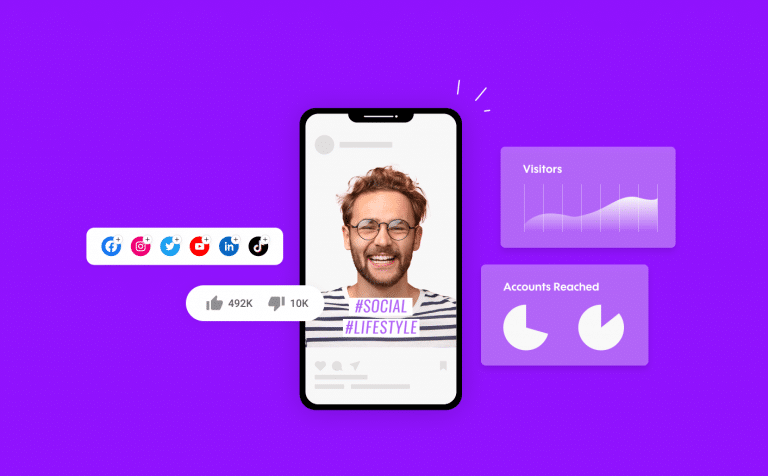
5 Onboarding Videos for New Employees
The paperwork is done, contracts were signed, and your new employee is about to embark on their new journey with your company. The next step for you and for them is onboarding. In a 2019 study, it was found that 93% of employers stated that a good onboarding experience is crucial for employee retention. Strategies HR professionals use to facilitate the onboarding process are critical for this experience. Great onboarding requires you, as an employer, to provide all the information an employee needs to integrate themselves into the company culture. This can be easily achieved by creating a series of successful onboarding videos.
In this article, we will go over what your company should try to achieve with onboarding. We’ll also outline why it should be, and how it can be, more engaging. Then, we will outline how to use video during the process, and the five onboarding videos you need for your employees.

About onboarding
In the human resource industry, onboarding refers to the process of introducing a newly hired employee into an organization. It can also be referred to as organizational socialization and a way to help employees understand their new position and job requirements. The process can be completed through synchronous and asynchronous communication. The most effective onboarding lasts at least a few months.
The entire process can include the following:
- New hire paperwork
- Policy and culture training
- Welcome event/communications
- Employee handbook delivery
- Skills training
- Benefits education and paperwork
- Facility tours
- Team building
Goals of onboarding
Whatever methods you use for onboarding, you should always have specific goals in mind. You want your HR team and new employees to know exactly what the takeaway should be for each activity. Onboarding should be taken seriously as an essential business process.
A business process is a series of steps performed within an organization to achieve a concrete goal or goals. With onboarding, you need to keep in mind these goals. There may be additional industry or organization standards that you need to include in your onboarding process, but your process should broadly follow these guidelines:
- Educate new employees about your company’s mission, vision, and culture.
- Set expectations about job roles, duties, and performance.
- Introduce the organization’s structure, workflow, and team.
- Train your new hire on how to properly execute their role within the organization.
- Inspire gratitude and excitement in your new hire for being involved in your organization.

Source: Motadata
Why use onboarding videos
Videos can be an incredibly effective tool for onboarding. They allow you to engage with new hires in a personal and interesting way. You have a digital means to connect with these employees before they even set foot on company grounds (assuming they ever will, in this age of remote working). The videos can be uploaded to your website or accessed through a private cloud.
Onboarding videos also allow you to:
Show rather than tell
They give you a way to show off your company’s facilities and management team. It gives context to then talk about each aspect of your business that will help with information retention. With an average of 54 onboarding activities for new hires to complete, you want to be able to deliver information in a way that facilitates learning.
Videos are more engaging
Videos allow new hires to break free of boring paperwork. There is no guarantee that employees will read through manuals carefully. Videos offer a way to make sure your new hires are engaged in the material.

Videos help expedite the onboarding process
Videos give you a way to provide quick and easy onboarding. Employees no longer have to wait for an HR professional or team leader to provide company basics. It also does not require employees to read lengthy documents, which can take up a significant amount of time.
How to use videos during onboarding
The onboarding process should be gradual. You don’t want to overwhelm new hires on their first day or week with your organization. The process should gradually build your new hires’ knowledge of their role within your company. You must give employees time and space to learn and retain all relevant information.
Throughout the process, you can track new hires’ progression using human resources software. It is important to monitor the progress of new employees to make sure the onboarding materials are meeting their needs. Create videos throughout the onboarding process to meet specific onboarding goals within a timeline.
Videos should be used throughout the process to improve the onboarding experience. Here are some tips to help make excellent onboarding videos:
Be inclusive: Make sure your onboarding videos recognize and encourage diversity. Your videos should always include closed-captioning and audio descriptions for an easy viewing experience.
Keep it concise: Long training videos can be equally as hard to absorb as long written documents. You can have as many onboarding videos as you want. However, to create an effective training video, make it short and sweet.
Make videos coincide with in-person onboarding activities: Having new hires learn about something and then having them actually do it is the best way to facilitate information retention. Don’t let the information they learn in the videos go cold. Make the videos timely with what they are doing that week.
Five key onboarding videos
Now, let’s move on to the five onboarding videos you absolutely need at your organization.
1. Welcome video
On their first day, new hires should also be introduced to the company in a way that gets them excited to start their new job. If your hires watch this from home, consider using an internet phone line so you can communicate and address any concerns from wherever you or your new employee are located.
Keep welcome messages short and sweet. This video can be delivered by a member of your C-Suite or by employees themselves. It should outline what a new start should expect and quell any anxieties they may be feeling.
The welcome video also allows new hires to get familiar with the faces of the people they may interact with daily. This will also help to decrease any anxieties about entering an unfamiliar environment. This video can be the first in a series that an employee will watch on day one, so you can also use this opportunity to outline what they will learn and watch that day.
2. Knowledge Exchange video
New employees may be replacing someone who is leaving or joining as a member of an existing team. If you are prepared, you can plan a knowledge transfer video series. It can give new hires vital knowledge, skills, habits, and hacks developed by someone that has hands-on, personal experience in the same role.
Knowing how someone else managed their role within the company will give new hires confidence in their position quickly. They should and will have their own style, but can also borrow from the best of the previous person in their position or their coworkers.
For example, if the previous employee had a trick to make project management easier, it would be beneficial to let the new team member know. A “knowledge exchange” video allows for continuity in your company. It ensures that your company’s processes see less turbulence while onboarding new employees.
This type of video can include:
- The tools they found most useful. f
- The most challenging parts of their position and how they navigated them.
- The most fulfilling or fun aspects of their job.
- Any tips or tricks they have discovered along the way.
- How they prioritize tasks and what workflow worked best for them.
3. Key company policies video
In the first week that your new hire is with the company, they should be informed of the company’s policies and procedures. This allows them to put their best foot forward with your company. These videos are necessary for promoting a healthy and positive culture within your organization.
This might require the delivery of a lot of important information. It is best to deliver this training in a series. These videos can include a video centered on:
- Company code of ethics and conduct policies
- Non-discrimination policies
- Cybersecurity and technology policies
- Workplace harassment policies
It may be tempting to pull language straight from your company’s employee handbook. However, it is important to make these videos as captivating as possible. Make sure to make the videos creative and find ways to engage with your new hire.
Write a video script for each of the training segments, and workshop them before recording. Get feedback from different departments. Also, have continuous feedback from new hires on their experience watching these videos. Ask them what takeaways they had and if they have any input on how to improve training.
4. Job Skills Training video
Now that your new hires have the basics, you must integrate them into your organization’s team. The first 30 days should be spent training new hires on role-specific tasks. This can also be continued beyond the first month, of course. Try to slowly feed content to new hires over time. This allows them to absorb information in digestible chunks.
When creating your onboarding timeline, schedule these videos for the practical work your employee is undertaking at the company. Have them do the task under the supervision of a team member or manager the first time they complete it. If your organization completes tasks on the computer, consider using screen sharing to have the supervisor go over the process again live and then oversee the new hire completing it again.
When creating training videos, consider what knowledge new hires already have, but also recognize the value of continued learning and refreshers. There is also training that they will need to understand regarding your company’s specific workflow. For example, you may need a new hire to work with purchase orders. They may have done this for another company, but you still need to teach them your organization’s specific purchase ordering process.
5. Company Culture video
When you welcome a new hire, you want them to get an idea of your company culture that extends outside your welcome video. It gives employees an idea of what is important in your organization. This can be created based on testimonials from different employees.
You can also use this type of video to guide your new hire through a typical workday. This can be a great way to show your new hires the little things they need to know to effectively go about their day. Only by taking an employee through a real workday can you show them things like the intricacies of the photocopier or how to navigate around the building. Use the opportunity to show them all the company basics.
This is your opportunity to get creative and have fun with video training. Creating a winning video allows you to bring your brand to life for your new hire. Get existing employees involved with the production of the video to help foster a collaborative and engaging training culture.
Conclusion
After initial onboarding, use continuous training videos to refresh information and promote a learning culture within your company. Also, make sure the onboarding process does not end abruptly. This can lead to new hires feeling like they are left unsupported in their new role.
Regularly check-in to see if they have any questions or concerns, and give new hires access to additional resources to utilize as needed.
Another important part of onboarding is having new hires evaluate their experience. The best way to measure onboarding effectiveness is to ask the employees that went through the process. You can also use additional assessment throughout the process on what information they retained.
Whatever methods you use for onboarding, make sure the result is engaging, informative, and positive. Get employees excited to work for your company, and make them advocate for your organization’s mission and vision.




